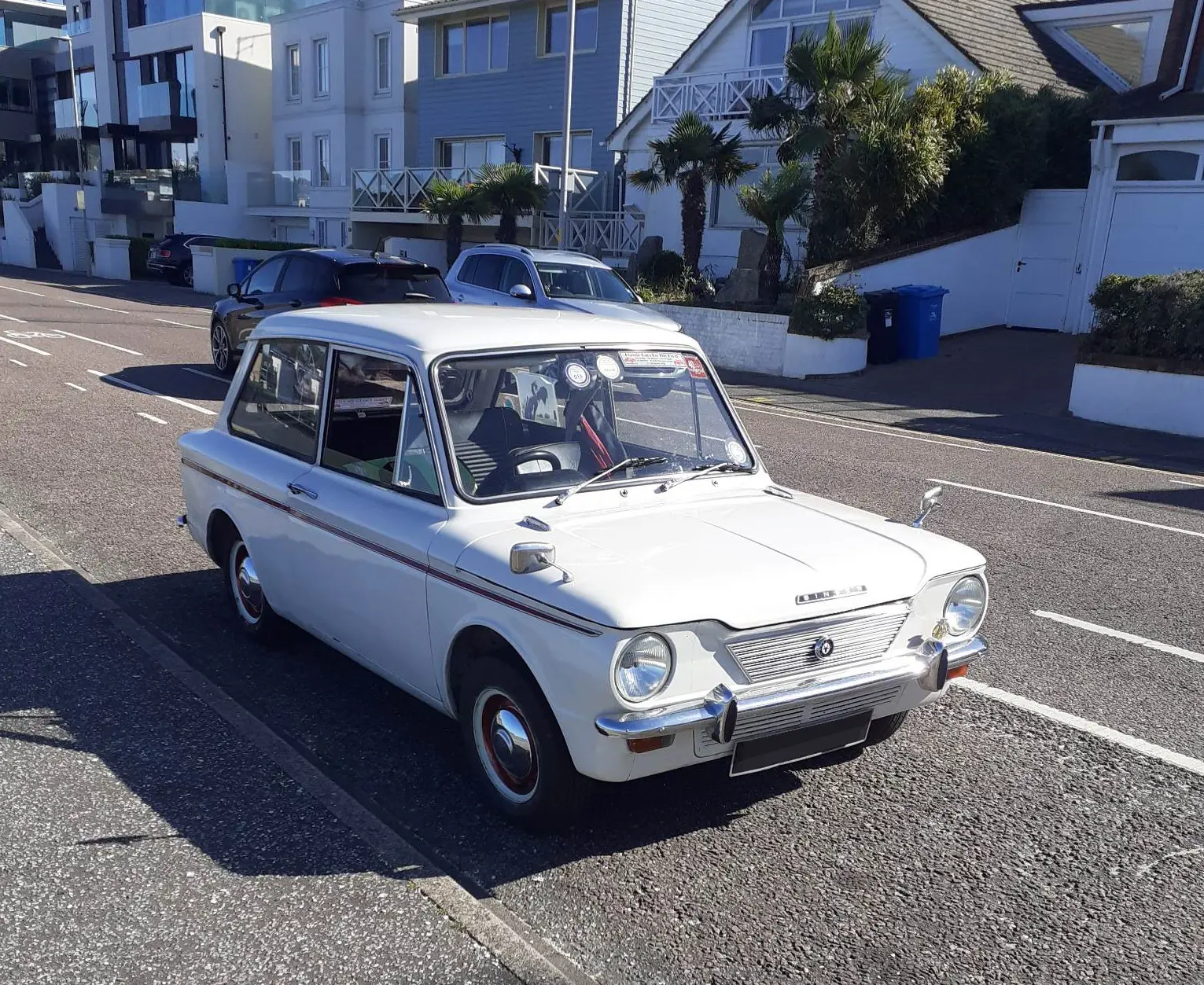MEET THE OWNER – TIM ROHN AND HIS SINGER CHAMOIS MK. 2
26 April 2023
“I started as an Imp man with my first car, which was a Paul Emery modified 1,000cc Imp Californian. Several Imps of different models later, and life got in the way - marriage, family etc. – and larger cars became the norm.”
But Tim never forgot those Imps, so he acquired his 1966 Singer – “I bought it for my son as a project to be modified. But on going through all the documents that came with it we found its paper history”. So instead, the Rohns decided to restore the Chamois to its original condition, and the result looks fit to grace a Rootes showroom.

The Singer Chamois debuted in October 1964, 17 months after the original Hillman Imp. This was the Rootes Group’s alternative to the Riley Elf and Wolseley Hornet, with £581 11s 3d gaining you extra instruments, a walnut veneer fascia, additional exterior brightwork and Dunlop SP41 radial tyres. Drivers could invest in seat belts at an additional £4 15s each, a fog lamp for £2 18s 6d and a push-button Radiomobile wireless at £27 18s 6d to listen to the BBC Light Programme.
The Telegraph accurately described the latest Singer as “a most attractive little package” and as for Chamois motoring today, Tim notes: “Driving with an over 50-year-old Imp is fine; as long as you remember, it is not suited to motorways. 875cc and 35 bhp do not equate to comfortable motorways, but stay on A roads, and the Singer drives comfortably, especially with the roads as they are at present – in generally poor condition. It will do 70-80 mph but is happier at 60.”
Production of the Chamois ended in 1970 with the demise of the Singer marque. Imp sales ended six years later, and enthusiasts have debated its merits for the past six decades compared to a certain FWD British Motor Corporation product. In Tim’s view: “As compared with the Mini it has more room and in my opinion, is more comfortable. However, when Rootes first produced the Imp, it was rushed out and had problems, ending with a poor press. So the Mini grabbed the market. Had there been no issues I think the story would have been different - look at the Imp’s success in motor sport. When I was a young driver, I had friends who favoured the Mini, but later they moved to Imps.
When the Rootes Group acquired the Singer company in 1956, many followers of the marque feared it would decline into badge-engineered obsolescence. But while the Gazelle, Vogue and Chamois were all clearly Hillman-based, the last-named really was a small saloon in the Singer tradition. So to look at Tim’s car today is to see an heir to the pre-war Nine. It is also a prime example of the second-generation Imp, introduced in 1965 and dispensing with the early model’s troublesome pneumatic throttle and automatic choke.
Too many classic enthusiasts overlooked the Hillman Imp family for too many years, but Tim’s 1966 Chamois reminds them of its appeal and potential. As a 1964 Autocar test concluded: “it well demonstrates that Continental designers have no monopoly of ideas and expertise when it comes to producing small rear-engine family cars”.
With thanks to: Tim Rohn
